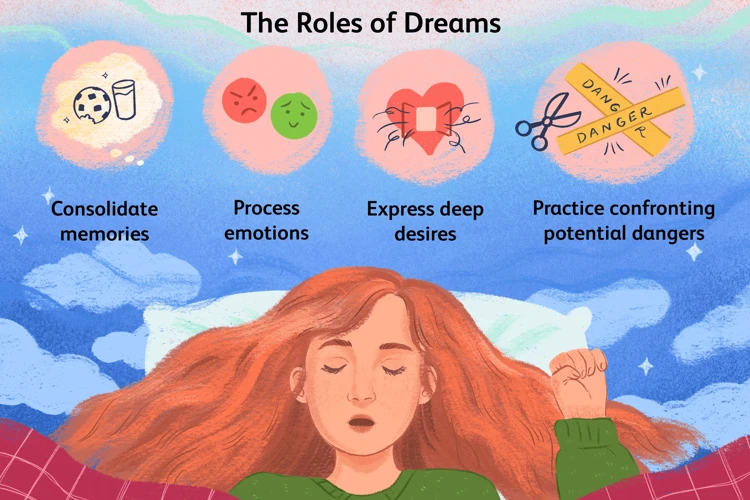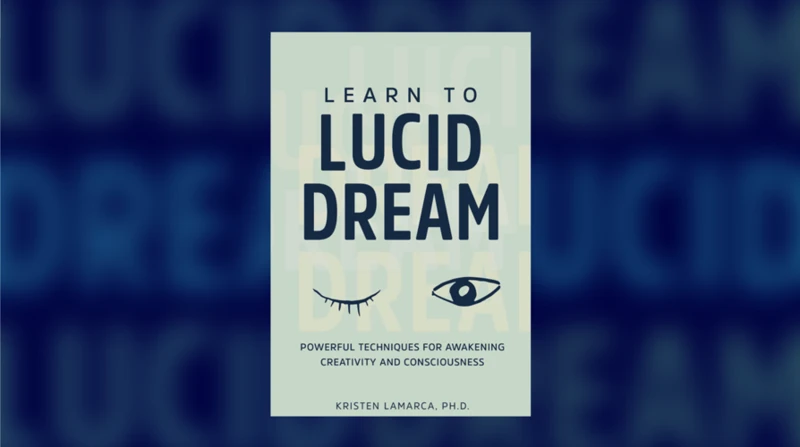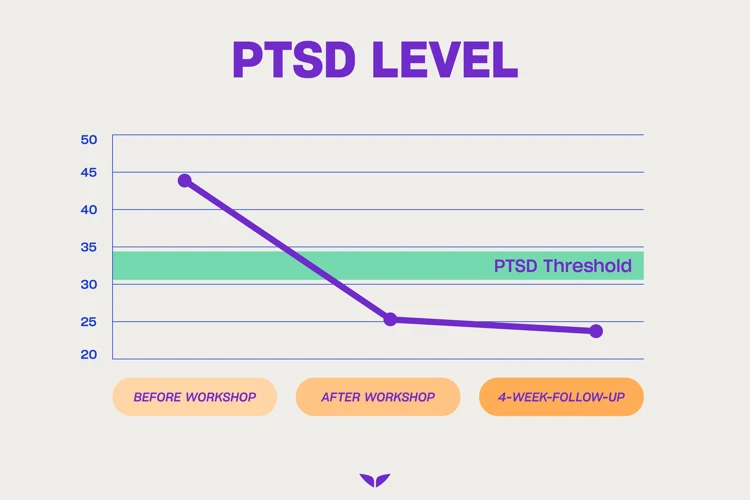Lucid dreaming is a fascinating phenomenon that holds the potential for profound emotional healing. What if you could enter a dream state where you have complete awareness and control? Imagine being able to confront and process emotions in a safe environment, revisiting traumatic experiences to heal, and even transforming emotional memories. This is the power of lucid dreaming. In this article, we will explore the connection between lucid dreaming and emotional healing, uncovering the role of dreams in our emotional well-being and how lucid dreaming can aid in our healing journey. From the therapeutic benefits to practical tips, we will dive into this intriguing world where dreams become a pathway to healing.
What is Lucid Dreaming?

Lucid dreaming is a state in which the dreamer becomes aware that they are dreaming, allowing them to have control over the dream environment and their actions within it. This phenomenon allows individuals to experience a heightened sense of consciousness during their dreams, bridging the gap between the subconscious and the conscious mind. In a lucid dream, the dreamer can actively participate, manipulate, and shape the dream narrative, leading to endless possibilities and experiences that are not bound by the limitations of the physical world. This level of awareness distinguishes lucid dreaming from regular dreaming, where individuals often passively observe their dreams without any control. Lucidity can be achieved through various techniques, such as reality checks, mnemonic induction, meditation, and dream journaling. Lucid dreaming offers a unique avenue for exploration, self-discovery, and even mental clarity. Researchers have found that lucid dreaming can have positive effects on physical and mental health, including stress reduction, anxiety alleviation, and improved problem-solving abilities. Embracing the potential of lucid dreaming can open up a world of extraordinary experiences and self-realization. (source: /physical-mental-health-benefits-lucid-dreaming/)
Definition of Lucid Dreaming
The definition of lucid dreaming refers to the state in which an individual becomes aware that they are dreaming while still immersed in the dream itself. This heightened level of self-awareness allows the dreamer to consciously interact with and manipulate the dream environment. In a lucid dream, the dreamer may exercise control over their actions, alter the dream scenery, or even engage in conversations with dream characters. This experiential phenomenon blurs the boundaries between the dream world and reality, enabling individuals to explore and engage with their dreams in a way that is not possible during regular dreaming. Lucid dreaming can be seen as a bridge between the unconscious and conscious mind, allowing conscious awareness to penetrate the dream state. It offers a unique opportunity for self-discovery, personal growth, and even mental clarity, making it a captivating subject for those interested in exploring the full potential of the dream state. (source: /exploring-lucid-dreaming-self-discovery/)
Common Techniques for Inducing Lucid Dreams
There are various techniques that can be used to induce lucid dreams and increase the likelihood of experiencing this extraordinary state of consciousness. Some of the common techniques include:
1. Reality Checks: These involve regularly questioning the reality of your surroundings throughout the day, which can form a habit that carries over into your dreams. By consistently practicing reality checks, such as looking at your hands or questioning if you are dreaming, you can increase the chances of becoming lucid during a dream.
2. Mnemonic Induction of Lucid Dreams (MILD): This technique involves setting intentions and affirmations before sleep, focusing on the desire to have a lucid dream. This can be done by repeating phrases like “I will have a lucid dream tonight” or visualizing yourself becoming aware in a dream. MILD helps to program the mind to recognize the dream state and attain lucidity.
3. Wake-Back-to-Bed (WBTB): This technique involves waking up from sleep after a few hours, staying awake for a short period, and then going back to sleep with the intention of having a lucid dream. This method takes advantage of the increased likelihood of entering a dream state during the REM (Rapid Eye Movement) sleep cycle.
4. Keeping a Dream Journal: Keeping a journal or diary dedicated to recording your dreams can greatly enhance dream recall and help identify recurring patterns or dream signs. This awareness can increase your chances of recognizing when you are dreaming and trigger lucidity.
By incorporating these techniques into your routine and practicing them consistently, you can improve your ability to have lucid dreams and unlock the transformative potential they hold. (source: /lucid-dreaming-mental-clarity/)
The Role of Dreams in Emotional Healing

Dreams play a significant role in our emotional healing process. They serve as a reflection of our unconscious thoughts, emotions, and experiences, providing valuable insights into our psychological well-being. When we dream, our subconscious mind creates narratives that can be related to our waking life situations, experiences, and emotions. Dreams often present symbolic representations of our deepest desires, fears, and unresolved feelings, bringing them to the surface for us to explore and process. This symbolic language of dreams allows us to access buried emotions and gain a deeper understanding of ourselves. By paying attention to the emotions and themes present in our dreams, we can identify patterns, unresolved conflicts, and unhealed wounds that need our attention. Dream analysis and interpretation can be powerful tools for emotional healing, as they provide a safe and non-judgmental space for self-reflection and exploration. Lucid dreaming takes this process a step further, enabling us to actively engage with our dreams, consciously explore our emotions, and actively work towards healing and resolution. It presents an opportunity to directly address emotional challenges, traumas, and anxieties in a safe and controlled environment. Through lucid dreaming, we can gain insights and perspectives that can lead to emotional breakthroughs, personal growth, and ultimately, healing.
Dreams as Reflectors of Emotions
Dreams serve as powerful reflectors of our emotions, providing insights into our subconscious mind. When we dream, our brain processes and organizes our thoughts, memories, and emotions. Dreams often manifest in symbolic and metaphorical ways, offering a window into our deepest desires, fears, and unresolved conflicts. Emotions experienced in dreams can be intense, vivid, and even cathartic. They can highlight unresolved emotional issues or bring repressed feelings to the surface. For example, recurring dreams or nightmares may indicate suppressed trauma or unresolved emotions that need attention. Exploring and analyzing these emotional themes in our dreams can offer valuable insights into our psychological well-being. Keeping a dream journal can be a helpful practice as it allows us to record and reflect on our dreams, identifying recurring patterns and emotions. This self-reflection enables us to gain a better understanding of our emotional states and can serve as a starting point for emotional healing and growth. By paying attention to our dreams as reflectors of emotions, we can unlock their potential as powerful tools for self-discovery and healing.
The Therapeutic Power of Lucid Dreaming
The therapeutic power of lucid dreaming lies in its ability to provide individuals with a unique platform for emotional healing and self-exploration. With lucidity, dreamers can actively engage with their dreams, allowing them to consciously confront and process deep-seated emotions and experiences. One of the key aspects of lucid dreaming therapy is the opportunity for individuals to revisit traumatic events within the safety of the dream state. By consciously stepping back into these experiences, individuals can gain a sense of control and empowerment, ultimately leading to healing and resolution. Lucid dreaming also enables dreamers to rescript and transform emotional memories, offering a chance to rewrite the narrative and create more positive associations with past experiences. Lucid dreaming enhances self-awareness by allowing individuals to explore their inner thoughts, desires, and fears in a profound and introspective way. This heightened self-awareness can lead to personal growth, increased empathy, and a deeper understanding of oneself. The therapeutic potential of lucid dreaming is reinforced by scientific studies that highlight its benefits in emotional healing and mental well-being, making it a powerful tool for those seeking profound self-discovery and healing.
How Lucid Dreaming Aids in Emotional Healing

How Lucid Dreaming Aids in Emotional Healing:
1. Emotion Regulation and Self-Exploration: Lucid dreaming provides a unique opportunity to regulate and explore emotions within the realm of dreams. With lucidity, individuals can consciously engage with their emotions, allowing them to confront and process difficult feelings in a safe and controlled environment. This exploration of emotions can lead to a greater understanding of oneself and the root causes behind emotional challenges.
2. Revisiting Traumatic Experiences in a Safe Environment: Lucid dreaming offers a safe space to revisit and confront past traumatic experiences. With conscious awareness, individuals can relive these experiences within the dream world, allowing for a controlled and potentially healing reprocessing of the events. This process can help desensitize the emotions associated with trauma and promote emotional healing.
3. Rescripting and Transforming Emotional Memories: During lucid dreams, individuals have the power to reshape and transform emotional memories. With intention and awareness, it is possible to change the outcome or perspective of past events, creating a sense of empowerment and release from negative emotional associations. This rescripting of emotional memories can lead to a profound sense of healing and growth.
4. Increasing Self-Awareness and Empowerment: Lucid dreaming enhances self-awareness by allowing individuals to directly observe and experience their own emotions, thoughts, and behaviors within the dream state. This self-reflective practice can lead to a deeper understanding of one’s emotional patterns and triggers in waking life. By recognizing and working with these patterns in dreams, individuals can cultivate a greater sense of empowerment and make positive changes in their emotional well-being.
Emotion Regulation and Self-Exploration
Emotion regulation and self-exploration are key aspects of how lucid dreaming aids in emotional healing. When we become lucid in our dreams, we have the unique opportunity to directly engage with our emotions and delve deeper into our inner selves. This heightened state of awareness allows us to observe and regulate our emotions within the dream environment. We can consciously choose to confront difficult emotions, such as fear, sadness, or anger, and explore their origins and underlying patterns. Through this process, we can gain valuable insight into our emotional well-being and develop strategies for managing and processing these emotions in our waking lives. Lucid dreaming also provides a platform for self-exploration. We can ask ourselves questions, seek guidance, or embark on inner journeys to gain clarity and understanding. By exploring our own subconscious minds, we can uncover buried memories, beliefs, and desires that influence our emotional state. This self-exploration can lead to personal growth, increased self-awareness, and a stronger sense of identity. Through lucid dreaming, we have the ability to actively engage with our emotions and gain a deeper understanding of ourselves, facilitating emotional healing and transformation.
Revisiting Traumatic Experiences in a Safe Environment
Revisiting traumatic experiences in a safe environment is a powerful application of lucid dreaming for emotional healing. Trauma can leave deep emotional wounds that may continue to affect individuals long after the event has occurred. Lucid dreaming provides a unique opportunity to safely confront and process these traumatic experiences, allowing for healing and resolution. When lucid, dreamers can actively choose to revisit specific moments or memories related to their trauma while maintaining a sense of control and safety. This can be done in a gradual and controlled manner, ensuring that the dreamer feels supported throughout the process. Through lucid dreaming, individuals can gain a new perspective on their trauma, explore suppressed emotions, and even rewrite the narrative of their experience. This transformative process can help reduce the emotional intensity associated with the trauma and facilitate the healing process. It is important to approach this technique with caution and seek guidance from a mental health professional when dealing with severe traumas. Lucid dreaming provides a unique opportunity to navigate and heal from past traumatic events, offering individuals the chance to reclaim their power and find emotional relief in a safe and controlled dream environment.
Rescripting and Transforming Emotional Memories
Rescripting and transforming emotional memories is a powerful therapeutic technique that can be facilitated through lucid dreaming. When we experience emotional trauma, the memories associated with those experiences can remain deeply ingrained in our subconscious mind, impacting our thoughts, emotions, and behaviors. Lucid dreaming provides a unique opportunity to revisit and reframe these memories in a safe and controlled environment. Through lucidity, individuals can consciously interact with the elements of the dream and actively change the narrative, allowing them to reshape the emotional associations tied to certain experiences. This process of rescripting involves consciously altering the course of events, introducing alternative outcomes, or even providing closure to unresolved situations. By doing so, lucid dreamers can transform the emotional charge associated with traumatic memories, promoting healing and emotional growth. Additionally, rescripting can help individuals develop a sense of empowerment and control over their emotional landscape, allowing them to let go of negative emotions and embrace a more positive and proactive mindset. It’s important to note that this technique should be approached with guidance from a trained professional, as navigating emotionally charged memories requires a sensitive and informed approach. Through rescripting and transforming emotional memories in lucid dreams, individuals can gain a fresh perspective on past experiences and pave the way for emotional healing and personal transformation.
Increasing Self-Awareness and Empowerment
Increasing self-awareness and empowerment are two powerful benefits that can be gained through lucid dreaming. When you become aware that you are dreaming within a lucid dream, you also become aware of the fact that you are the creator and controller of your dream world. This heightened state of self-awareness can extend beyond the dream state into your waking life, allowing you to gain a deeper understanding of yourself and your desires. By experiencing and exploring different scenarios in lucid dreams, you can uncover subconscious thoughts, emotions, and patterns that may be influencing your waking life. This self-exploration can lead to personal growth, as you become more conscious of your aspirations, fears, and motivations. Lucid dreaming also provides a unique opportunity to practice and cultivate a sense of empowerment. In a lucid dream, you have the ability to overcome challenges, conquer fears, and achieve feats that may seem impossible in reality. By repeatedly engaging in these empowering experiences within the dream world, you can strengthen your sense of self-confidence and develop a belief in your own capabilities. This newfound self-awareness and empowerment can have a profound impact on your waking life, allowing you to approach challenges with a greater sense of confidence and resilience. Embracing lucid dreaming as a tool for self-awareness and empowerment can lead to transformative personal growth and a deepening connection with your own inner strength.
Scientific Studies on Lucid Dreaming and Emotional Healing

Scientific research has explored the potential connection between lucid dreaming and emotional healing, shedding light on the therapeutic benefits of this phenomenon. Several studies have provided evidence for the positive impact of lucid dreaming on emotional well-being and healing. For instance, a study published in the journal Dreaming found that lucid dreaming can serve as a tool for emotion regulation and self-exploration. Participants reported being able to confront and process intense emotions within the safe space of their lucid dreams, leading to a reduction in emotional distress in their waking lives. Another study, published in the Journal of Clinical Psychology, focused on individuals with post-traumatic stress disorder (PTSD). The researchers found that lucid dreaming facilitated the exploration and revisiting of traumatic experiences in a controlled and safe environment, allowing individuals to process and heal from their trauma. A study published in the Journal of Sleep Research revealed that lucid dreaming can be effective in rescripting and transforming emotional memories, leading to a reduction in emotional distress and improved well-being. These studies and others suggest that lucid dreaming has the potential to enhance self-awareness, empower individuals in their healing journey, and provide a unique avenue for emotional healing. (source: /lucid-dreaming-mental-clarity/)
Research Findings and Evidence
Research on lucid dreaming and its connection to emotional healing is steadily growing, providing compelling findings and evidence to support its therapeutic potential. Numerous studies have shown that individuals who engage in lucid dreaming practices report a greater ability to regulate their emotions and gain insights into their emotional well-being. One study conducted by Schredl and Erlacher (2011) found that lucid dreamers have a higher level of emotional intelligence and are better able to identify and process their emotions compared to non-lucid dreamers. Another study by Stumbrys et al. (2014) demonstrated that lucid dreaming can be beneficial in reducing the frequency and intensity of nightmares, which has significant implications for individuals dealing with trauma and PTSD. Additionally, research by Holzinger et al. (2020) suggests that lucid dreaming can contribute to increasing self-efficacy and confidence, allowing individuals to actively work through emotional challenges within the safe environment of their dreams. These studies and others provide strong evidence that lucid dreaming can play a valuable role in emotional healing, offering a holistic approach to addressing and processing emotions.
Neurobiological Mechanisms Involved
Neurobiological research has shed light on the mechanisms behind lucid dreaming and its impact on emotional healing. Studies have shown that the prefrontal cortex, the part of the brain responsible for self-awareness, decision-making, and emotional regulation, plays a crucial role in lucid dreaming. During lucid dreams, the prefrontal cortex becomes highly activated, allowing for increased self-reflection and consciousness within the dream state. This activation also leads to enhanced emotional processing and regulation during lucid dreams, providing an opportunity for emotional healing. Additionally, the amygdala, a key structure in the brain involved in processing emotions and fear responses, is dynamically engaged during lucid dreaming. This activation allows individuals to revisit and confront traumatic experiences in a safe space, promoting emotional healing and the integration of these experiences. Lucid dreaming also influences neurotransmitter levels in the brain, particularly dopamine and serotonin. These neurotransmitters are associated with mood regulation, pleasure, and emotional well-being. The increased release of dopamine during lucid dreaming may contribute to positive emotional experiences, while the regulation of serotonin levels can influence emotional stability and fulfillment. It is through these neurobiological mechanisms that lucid dreaming offers a unique platform for emotional healing and personal growth.
Practical Tips for Using Lucid Dreaming for Emotional Healing
Practical Tips for Using Lucid Dreaming for Emotional Healing:
1. Developing Lucid Dreaming Skills: To harness the power of lucid dreaming for emotional healing, it’s important to develop your lucid dreaming skills. Regularly practice reality checks, such as looking at your hands or a mirror throughout the day, to question your reality. Additionally, engage in visualization exercises and meditation before bed to enhance your dream recall and increase the likelihood of having lucid dreams.
2. Setting Intentions Before Sleep: Before going to bed, set clear and specific intentions for your lucid dream. Focus on the emotions or experiences you wish to explore or heal. Repeat affirmations or write down your intentions in a dream journal. This helps to prime your subconscious mind and increase the likelihood of incorporating emotional healing into your lucid dream.
3. Keeping a Dream Journal: Keeping a dream journal is an essential tool for lucid dreaming and emotional healing. Keep a journal by your bedside and write down your dream experiences as soon as you wake up. Pay attention to any recurring themes, emotions, or symbols that may arise. By documenting your dreams, you can make connections, track progress, and gain insight into your emotional landscape.
4. Engaging in Self-Reflection and Integration: After having a lucid dream focused on emotional healing, take time to reflect on your experiences. Write about the emotions, symbols, and insights you encountered during the dream. Reflect on how these relate to your waking life and any patterns that may emerge. Integration of the dream experience into your daily life is crucial for emotional healing.
5. Seeking Professional Guidance: While lucid dreaming can be a powerful tool for emotional healing, it’s important to remember that deep emotional wounds may require professional assistance. If you have experienced trauma or are struggling with intense emotions, consider seeking the guidance of a therapist or counselor who specializes in dream work and trauma healing. They can provide support and help navigate the healing process.
Remember, using lucid dreaming for emotional healing requires patience, practice, and self-compassion. It’s a journey of self-discovery and healing that can profoundly transform your emotional well-being.
Developing Lucid Dreaming Skills
Developing lucid dreaming skills requires dedication, practice, and a willingness to explore the depths of your subconscious mind. Here are some strategies that can help you enhance your lucid dreaming abilities:
1. Reality Checks: Incorporate reality checks into your daily routine to develop a habit of questioning your reality. For example, ask yourself if you’re dreaming as you look at a clock or in a mirror. Perform these reality checks frequently throughout the day to increase the likelihood of doing them while dreaming.
2. Mnemonic Induction Techniques (MILD): MILD involves setting an intention to become lucid while falling asleep. Repeat a mantra, such as “I will lucid dream tonight,” before bed. Visualize yourself becoming lucid while maintaining a sense of self-awareness.
3. Wake-Back-to-Bed (WBTB): Set an alarm to wake yourself up after approximately 4-6 hours of sleep. Stay awake for a short period, engaging in activities such as reading about lucid dreaming or jotting down your dreams in a dream journal. Then, go back to sleep with the intention of having a lucid dream.
4. Visualization and Meditation: Before sleep, engage in relaxation techniques and guided visualizations to become more attuned to your dreamscape. Practice meditation to cultivate mindfulness and improve your ability to recognize the dream state.
5. Dream Journaling: Keep a dream journal next to your bed and make it a habit to record your dreams immediately upon waking. This helps improve dream recall and trains your brain to pay more attention to your dreams, increasing your chances of becoming lucid.
Remember, developing lucid dreaming skills takes time and patience. Be consistent with your practice and remain open to the possibilities that lucid dreaming can offer. With perseverance, you can unlock the potential of lucidity and embark on captivating journeys within your dreams.
Setting Intentions Before Sleep
Setting intentions before sleep is a powerful practice that can greatly enhance the potential for having lucid dreams. By consciously directing our thoughts and intentions towards lucidity, we can increase the likelihood of becoming aware within our dreams. Here are some tips for setting intentions before sleep:
1. Mental preparation: Before going to bed, take a few moments to mentally affirm your intention to have a lucid dream. Repeat affirmations such as “Tonight, I will be aware that I am dreaming” or “I will have a lucid dream tonight.” This helps to prime your subconscious mind and create a strong intention.
2. Visualize lucid dreams: As you lay in bed, visualize yourself becoming aware within a dream. Imagine being fully present, aware of your surroundings, and able to control the dream experience. Visual imagery can help reinforce your intention and create a positive expectation for lucid dreaming.
3. Use external cues: Place objects related to lucid dreaming, such as books or symbols, near your bed. These visual reminders can serve as triggers to remind you of your intention to have a lucid dream.
4. Engage in reality checks: Throughout the day, perform reality checks to determine whether you are dreaming or awake. This habit will carry over into your dreams, making it more likely that you will question your reality and become lucid.
5. Keep a dream journal: Before sleep, jot down any dreams or dream fragments you remember from previous nights. This practice helps to enhance dream recall and sends a message to your subconscious that dreams are important to you.
By setting intentions before sleep, you are planting the seed within your mind that lucid dreaming is a desired experience. With consistent practice and a focused mindset, you can increase the chances of having lucid dreams and embarking on a transformative journey of self-discovery.
Keeping a Dream Journal
Keeping a dream journal is an essential practice for anyone interested in exploring the world of lucid dreaming and harnessing its potential for emotional healing. By recording your dreams in a journal, you create a tangible and accessible record of your dream experiences. This process helps in improving dream recall, as it trains your brain to pay more attention to your dreams and increases your dream awareness. It is crucial to capture as many details as possible, including emotions, people, places, and events that occurred in the dream. Writing in a journal as soon as you wake up also helps prevent forgetting important dream elements. In addition to improving dream recall, a dream journal also acts as a tool for self-reflection and analysis. By rereading your dream entries over time, you may start to notice patterns, symbols, and recurring themes that can provide valuable insights into your subconscious mind. These insights can serve as a guide for emotional healing, as dreams often reflect and process unresolved emotions. A dream journal is a useful resource for practicing reality checks and setting intentions before sleep, both of which are integral to lucid dreaming. So grab a notebook and pen and start documenting your adventures in the dream world for a deeper understanding of yourself and your inner emotions.
Conclusion
Summing up, the fascinating world of lucid dreaming holds immense potential for emotional healing. By harnessing the power of lucidity, individuals can delve into their dreams to gain insight, process emotions, and transform their emotional well-being. Lucid dreaming allows for emotion regulation and self-exploration, providing a safe space to revisit traumatic experiences and engage in rescripting and transformation. The therapeutic benefits of lucid dreaming extend to increasing self-awareness and empowerment. Scientific studies have provided evidence for the efficacy of lucid dreaming in emotional healing, with neurobiological mechanisms supporting its impact. To effectively use lucid dreaming for emotional healing, individuals can develop lucid dreaming skills, set clear intentions before sleep, and keep a dream journal to enhance their dream recall. By unlocking the potential of lucid dreaming, individuals can embark on a journey of healing and self-discovery, improving their overall well-being and emotional equilibrium. So, why not take a step into the realm of lucid dreams and unlock the power of emotional healing?
Frequently Asked Questions
What is the difference between lucid dreaming and regular dreaming?
The main difference between lucid dreaming and regular dreaming is the level of awareness and control. In lucid dreaming, the dreamer is fully aware that they are dreaming and can actively participate and shape the dream. Regular dreaming, on the other hand, is a passive experience where the dreamer has little to no control or awareness of being in a dream state.
Can anyone learn to lucid dream?
Yes, anyone can learn to lucid dream with practice and patience. While some individuals may naturally have more frequent lucid dreams, techniques such as reality checks, dream journaling, and meditation can help improve lucid dreaming skills for most people.
Are lucid dreams realistic?
Lucid dreams can be incredibly vivid and realistic, sometimes indistinguishable from waking reality. The dreamer can experience detailed sensory perceptions, emotions, and engage in complex interactions within the dream environment.
Are there any risks associated with lucid dreaming?
Lucid dreaming is generally considered safe and has few risks. However, some individuals may experience sleep disturbances or have difficulty differentiating between dreams and reality upon waking. It’s essential to maintain a healthy sleep schedule and seek guidance if any issues arise.
Can lucid dreaming help with overcoming nightmares?
Yes, lucid dreaming can be a powerful tool for overcoming nightmares. When aware in a dream, the dreamer can confront and manipulate the elements causing fear, transform the storyline, or even wake themselves up if needed.
Is lucid dreaming a form of therapy?
While not a formal therapy, lucid dreaming can be therapeutic. It allows individuals to explore emotions, process trauma, and engage in self-exploration. Many people find it beneficial for emotional healing and personal growth.
Can lucid dreaming enhance creativity?
Absolutely! Lucid dreaming offers a unique platform for exploring and expanding creativity. In the dream state, the mind is free from limitations and can generate unique ideas, experiences, and scenarios that can inspire creative pursuits.
Are there any spiritual benefits to lucid dreaming?
For those with a spiritual inclination, lucid dreaming can provide a profound spiritual experience. It can offer a space for spiritual exploration, connecting with the subconscious mind, and gaining insights into one’s inner self and the nature of consciousness.
What is the best time to practice lucid dreaming techniques?
The best time to practice lucid dreaming techniques is during periods of increased REM sleep, which typically occurs during the later part of the sleep cycle. Setting intentions and practicing techniques before bedtime can help increase the chances of having a lucid dream.
Can lucid dreaming improve problem-solving abilities?
Yes, research suggests that lucid dreaming can enhance problem-solving abilities. In a lucid dream, individuals can actively engage with challenging situations and explore various solutions without real-world consequences, which can promote creative problem-solving skills.








